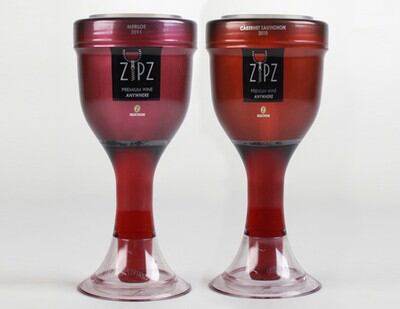Single serve wines are growing in popularity. However, these products are highly sensitive to oxidation, meaning their shelf life can fall short of requirements.
Lori Yoder, director material applications, PTI, told FoodProductionDaily.com developments in PET packaging are opening up market opportunities for these products.
Maintaining colour, flavour and aroma
More wine brands are offering single serves, and Yoder identifies it as a significant growth area.
“Wine drinking occasions have become more casual in recent years, so many wine brands have begun offering single-serve containers,” she said. “The growth in single-serve wine is expected to eclipse that of traditional wine packages.”
Wine has a number of components sensitive to oxidation. This process – caused by exposure to oxygen - can result in a loss of colour, brightness, flavour and aroma.
In traditional wine bottles, the glass prevents oxygen from permeating the container and reaching the product. Single serve PET packages, however, are more susceptible.
“As the package size decreases, the container surface area exposed to the atmosphere increases. The same phenomenon occurs with small carbonated soft drink and other types of containers, driving the need for additional barrier beyond standard PET,” Yoder said.
“The permeation to gases limits the use of PET in some applications, especially products that are sensitive to oxygen or loss of CO2.”

Oxygen scavengers
The shelf life target for many single serve wines is one to two years, which is beyond the barriers in traditional PET containers, Yoder said.
Barrier technologies including multilayer bottles, oxygen scavengers, and coatings have been developed to tackle the problem and expand PET’s packaging applications, she added.
“There are several options available for the 187mL wine market, including internally plasma coated PET bottles, pouches, Tetra Briks / juiceboxes and aluminium cans or bottles which can prevent oxidation.”
However, these single serve products are generally used as packing alone, with the contents poured into a glass for consumption.
“Several recent offerings provide both the drinking glass and barrier by incorporating an oxygen scavenger that reacts with oxygen to prevent it from reaching the wine and causing oxidation,” she added.
“The use of innovative package design and barrier materials such as oxygen scavengers have certainly led to the growing interest in single stage wine containers.
“Plastipak DiamondClear and Indorama OxyClear [a barrier resin] offer very high oxygen scavenging that allows them to be used at low loading levels to extend the shelf life of oxygen-sensitive products beyond a year.”
Another example is Zipz’s single serve wine in the US, a product with patented PET packaging that claims to offer a shelf life of up to 18 months.
